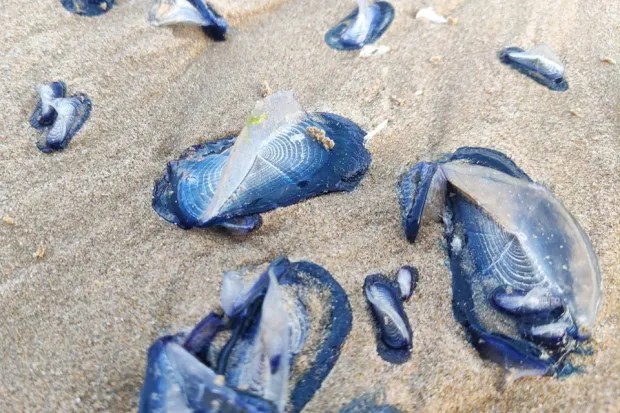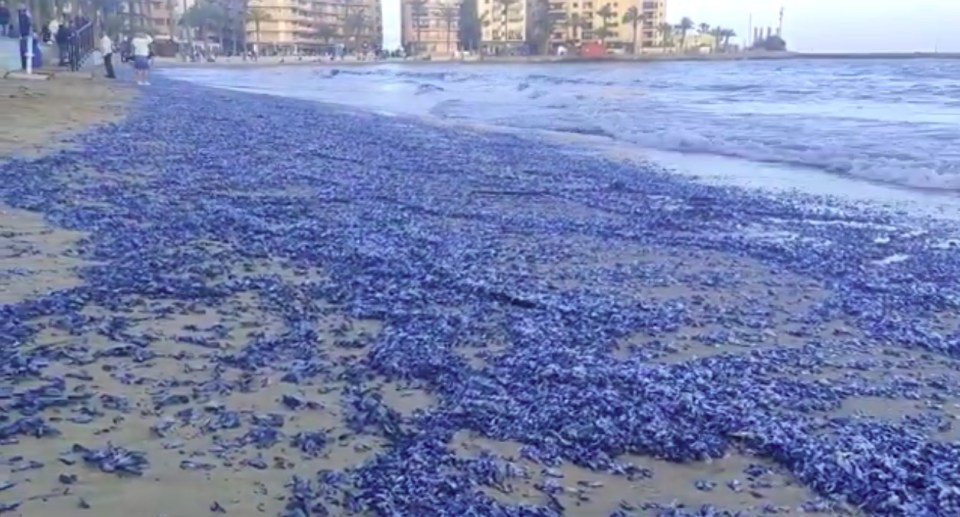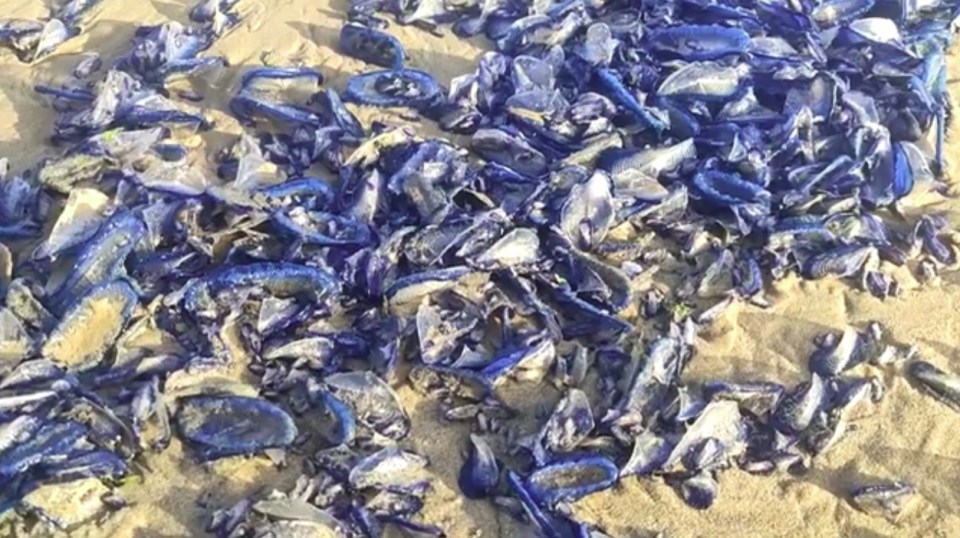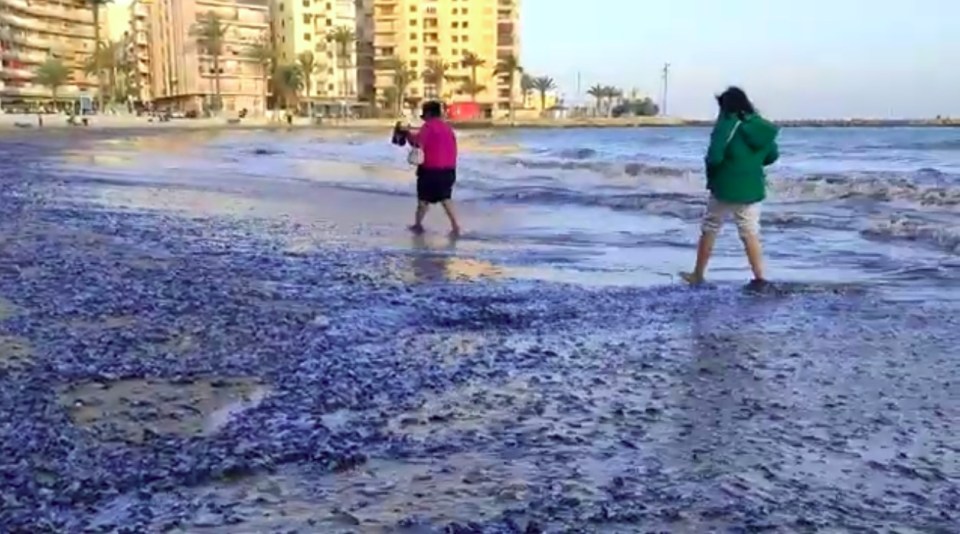WARNINGS have been issued by holidaymakers over a foul “rotten fish” smell at beaches at a Spanish holiday hotspot.
It’s thought a recent invasion of jellyfish along several parts of the coast are causing the stench in Ibiza – and also turned the beaches blue.
The phenomenon was caused by the arrival of hundreds and thousands of “sailboat” jellyfish.
The recent invasion occurred in Gran Canaria, but it now appears Ibiza has been hit with the jellies too.
The creatures were initially described as “an incredible sight” and widely photographed by amazed holidaymakers.
But since the jellyfish have started to rot, tourists have complained of a dreadful stench.
A number of the famous beaches, specifically in the Sant Josep area, the largest municipality in Ibiza, have been plagued in recent days by a strong bad smell.
Juan, a resident of Ibiza, raged on Facebook: “Yesterday we were in Cala Tarida with our puppies and, when we arrived, there was a very unpleasant smell of rotten fish all over the beach.
“On the shore there were like bits of plastic that smelled terrible.”
What the local believes is smelly plastic are actually sailboat jellyfish in the process of demcomposing, according to Periodico de Ibiza.
The proliferation of this type of jellyfish on the beaches of Ibiza at this time of year is not new and is becoming quite common.
Other users have expressed their disgust too, complaining that the bad beach smell extends to other points on the coast of San Seppina, like seaside areas of Cala de Bou or Bol Nou.
One other commenter said: “They are jellyfish in a state of decomposition; here in Cala de Bou there are places where you can’t be.”
Another added: “The prices of the very expensive bars and the beaches are disgusting. What a shame.”
The explosion in the jellyfish numbers has been attributed to warming seas and increased pollution.
Jellyfish can thrive in areas with lower oxygen levels, where other animals suffer.
At the beginning of April, tourists were blown away as beaches were blanketed by the sea creatures.
The small blue jellyfish washed up all over the golden sand and took locals and tourists in Gran Canaria island by complete surprise.
In the striking video, the Playa del Cura beach in Gran Canaria can be seen carpeted with the peculiar-looking jellyfish.
The unusual phenomenon took place after a storm washed thousands of the creatures onto the shore.
What are By-the-Wind Sailors?

By-the-wind sailors, also known as Velella, are a type of hydrozoan, closely related to jellyfish.
They have gelatinous bodies with stinging cells, similar to jellyfish, and are equipped with sail-like structures for drifting.
These creatures have flat, oval-shaped bodies that can grow from six to ten centimetres in length.
Their dimorphism has sparked speculation about potential differences in sailing direction between the northern and southern hemispheres, or even between the eastern and western shores of oceans.
Most Velella specimens are “left-handed”, with their sail angled from the upper-left to the lower-right along their long body axis.
This difference in sail orientation may affect their movement patterns.
They are typically found floating on the ocean’s surface, propelled by the wind and currents.
As a result, they are often washed up on beaches all over the world, including in the UK, Spain and Portugal.
Despite their striking appearance and deep blue colour, Velella are harmless to humans, with their stinging cells posing no significant threat.










